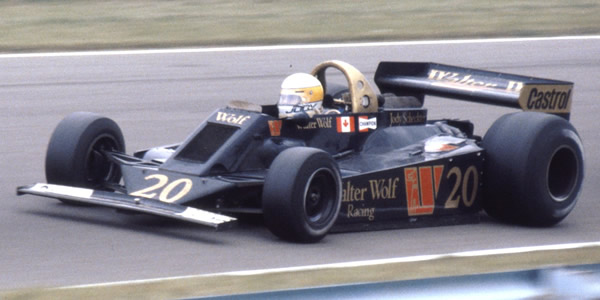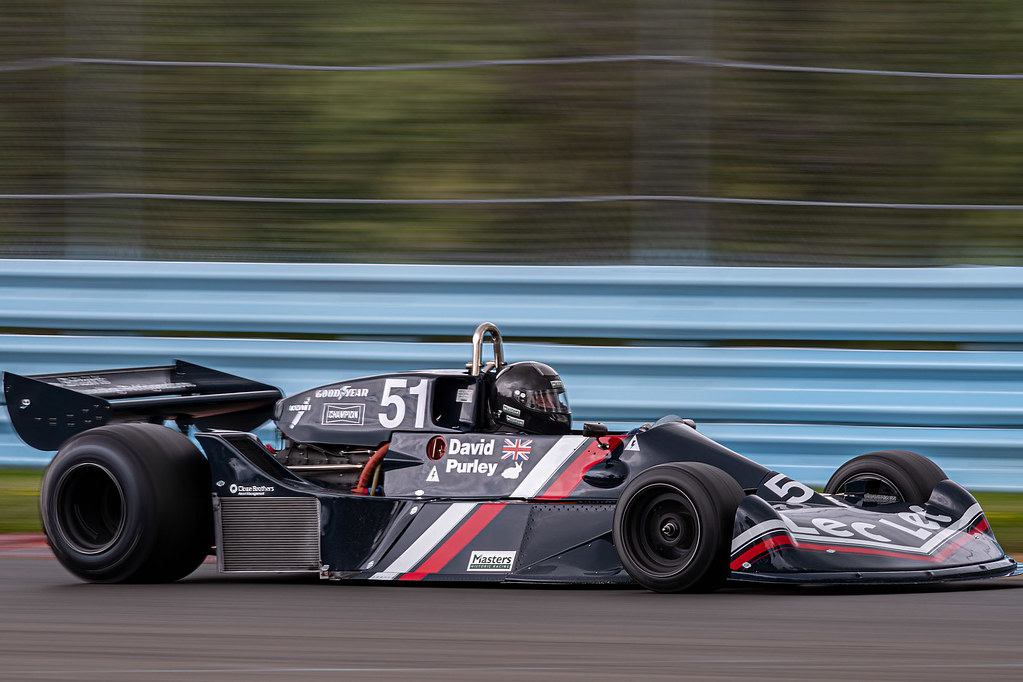Nestled in the rolling hills of upstate New York’s Finger Lakes region lies one of the most iconic and storied road racing circuits in North America – Watkins Glen International. A track that saw some of the most legendary races in the history of F1 races in the United States. A new track was established after extensive renovations in 2015, marking a significant development in the circuit’s history.
The Early Days: Racing Through the Streets
The origins of Watkins Glen International can be traced back to 1948, when law student and motorsports enthusiast Cameron Argetsinger had the idea to organize a sports car race through the streets of the nearby village of Watkins Glen. With support from the local chamber of commerce, Argetsinger mapped out a challenging 6.6 mile public road course that encompassed paved roads, cement, dirt roads, and even railroad crossings.
On October 2nd, 1948, the first Watkins Glen Grand Prix took place, with local resident Frank Griswold taking the checkered flag in his Alfa Romeo. The race was a huge success, drawing top drivers from the American sports car scene as well as thousands of eager fans. The races continued for the next four years until tragedy struck in 1952.
After driver Fred Wacker lost control and crashed into the crowd, killing one child and injuring nearly a dozen spectators, it was clear that major changes needed to be made to improve safety. Racing on open public roads was simply too dangerous to allow to continue. This led to the creation of a new 4.4-mile second course on town and agricultural roads, intended to better manage spectator safety. However, drivers later expressed concerns about its lack of run-off and visibility.
A Permanent Facility is Born: Watkins Glen Race Track
In 1953, racing at Watkins Glen was moved to a new 4.6 mile course on town and farm roads just outside the village. While this eased safety concerns, the rough dirt and gravel roads were less than ideal for drivers. It soon became apparent that the creation of a closed, purpose-built race track was necessary.
In 1956, after several years of planning and construction, a new permanent 2.3 mile circuit opened just southwest of Watkins Glen village. The track was designed with input from top mechanics and engineers to maximize safety and challenge for drivers.
From the beginning, Watkins Glen established itself as one of the top road racing venues in the United States. Early races featured the best drivers from the growing American sports car scene, along with visits from NASCAR stars looking to test their skills on the winding circuit.
The Arrival of Formula One: Watkins Glen Grand Prix
The history of Watkins Glen soon became intertwined with the pinnacle of international motorsport – Formula One. In 1961, just weeks before the planned Formula Libre season finale, organizers made a surprise bid to host the final race of the Formula One season.
With frantic preparations to upgrade facilities and bring the circuit up to FIA standards, the first United States Grand Prix at Watkins Glen went on as planned. An epic duel between Ferrari and Lotus driver Innes Ireland ended with Ireland taking a hard-fought victory to spoil the Constructor’s Championship for Ferrari.
Almost overnight, Watkins Glen was thrust into the global motorsports spotlight. Huge crowds flocked to upstate New York each fall as fans embraced the United States Grand Prix as a spectacular season finale.
In the years that followed, Watkins Glen cemented itself as a firm fan favorite stop on the Formula One calendar. Drivers praised the flowing, high speed corners that provided ample challenge and overtaking opportunities. Fans turned out in droves to witness stars like Graham Hill, Jackie Stewart, and Emerson Fittipaldi conquer The Glen’s sweeping twists and turns.
In 1979, during a rainy qualifying session, the newly crowned world champion Jody Scheckter was outpaced by his teammate Gilles Villeneuve, showcasing the intense competitive spirit and skill present during that event.

The Infamous “Boot”
As speeds increased in the late 1960s, it was clear an upgrade was needed to bring Watkins Glen up to modern Grand Prix standards. In 1971, a massive $2.3 million renovation completely transformed the circuit.
The renovation included the introduction of a new pit straight, enhancing racing conditions and driver safety. The new design eliminated several slow corners in favor of a new, extended segment that became known as “The Boot” thanks to its distinctive shape. Winding through the rolling countryside, the Boot provided an exciting new challenge with its blind crests and off-camber turns.
François Cevert won the first Grand Prix on the reconfigured course in 1973. But the dangers of high speeds were highlighted again after Cevert and Helmut Koinigg were killed in separate accidents over the next two seasons.
A chicane was added at the fast Esses in 1975 to reduce speeds, but even with modifications Watkins Glen’s rural layout was increasingly unsuitable and unsafe for the ground effect F1 cars of the late 1970s.
The End of Formula One at The Glen
Beset by financial struggles and the rising costs demanded by Formula One Management, Watkins Glen was dropped from the F1 calendar after 1980. Without its signature event, the circuit swiftly fell into bankruptcy.
For two years Watkins Glen sat dormant, hosting only a handful of low-key SCCA events. But in 1983 it found an unlikely savior in the form of Corning Glass Works, who formed a partnership with International Speedway Corporation (ISC) to purchase and revive the crumbling circuit.
Renamed Watkins Glen International, a renovated track reopened for business in 1984. Safety upgrades like the removal of the perilous Esses chicane helped lure back top sports car and sedan series like IMSA and Trans Am. Track officials added a bus stop chicane known as the Inner Loop to improve safety after serious accidents in the early ’90s. NASCAR soon followed, returning to The Glen for the first time since 1957.
Though its days as an F1 host were over, Watkins Glen International had been given a new lease on life through the passion of motorsports.
Track Layout and Features
Watkins Glen International is a 2.45-mile historic track that masterfully blends fast and slow corners, elevation changes, and undulations, creating a unique and challenging racing experience. The entire racing surface is composed of smooth asphalt, ensuring a consistent and reliable grip for drivers as they navigate the circuit. One of the standout features of Watkins Glen is its pit straight, one of the longest in the country, which allows drivers to reach exhilarating speeds before braking hard for the first turn.
Over the years, the track layout has seen several modifications to enhance safety and maintain its competitive edge. Notably, in 1975, a chicane was added to the fast Esses section, reducing overall speeds but significantly improving safety. This blend of historical charm and modern upgrades makes Watkins Glen International a beloved venue for drivers and fans alike.
American Sports Car Racing Heritage
Watkins Glen International boasts a storied history in American sports car racing, dating back to the inaugural 1948 Watkins Glen Grand Prix. This event marked the beginning of a legacy that would see the track host numerous high-profile races, including the prestigious NASCAR Cup Series, the IndyCar Series, and the Formula One United States Grand Prix.
The track’s first permanent course, constructed in 1956, quickly established Watkins Glen as a premier national and international racing venue. Over the decades, it has been graced by some of the biggest names in motorsport, such as Jim Clark, Graham Hill, and Jackie Stewart. Today, the track’s rich heritage is celebrated through various events and festivals, keeping the spirit of American sports car racing alive and thriving.

The Modern Era at The Glen
Over the last 30 years Watkins Glen has continued to cement itself as one of the top multi-purpose tracks in North America. In addition to NASCAR, the facility hosts one of the premier sports car endurance races on the planet – the 6 Hours of The Glen – part of the IMSA WeatherTech SportsCar Championship. These race weekends are packed with various events, offering amenities for spectators and sponsors, and highlighting the return of significant racing events like NASCAR and IndyCar.
Open-wheel racing returned to the track in 2005 with the arrival of the IndyCar Series. Names like Scott Dixon, Will Power, and Alexander Rossi have carried on the legacy of legends like Andretti, Stewart, and Jones.
Constant renovations and upgrades, including a complete repave in 2015, ensure Watkins Glen International retains its place at the sharp end of technology and fan amenities. The influence of New York State on the track’s development and regulations has been significant, stemming from early incidents in sports car racing history.
Now owned by NASCAR, the historic road course blending high-speed corners and elevation changes looks well-placed to build on over seven decades of motorsports history hosting top-tier racing series from across the spectrum.
Watkins Glen International isn’t just a race track – it’s an iconic and beloved institution representing the spirit, challenge and excitement of American road course racing.
The Watkins Glen Experience
The Watkins Glen Experience offers a unique blend of high-speed racing and breathtaking natural beauty. Nestled in the picturesque town of Watkins Glen, New York, the track is surrounded by rolling hills and scenic lakes, providing a stunning backdrop for the racing action. The track’s layout takes full advantage of the natural terrain, with elevation changes and undulations that add to the thrill of the driving experience.
Visitors to Watkins Glen International can enjoy top-notch facilities and a range of amenities designed to enhance their experience. From the exclusive Jack Daniel’s Club to the Sahlen’s Pit Inn, there are plenty of options for fans to enjoy the racing action in style. Whether you’re a seasoned racing enthusiast or simply looking for a unique and exciting outing, the Watkins Glen Experience promises an unforgettable adventure.
Watkins Glen International: Frequently Asked Questions
How many F1 races took place at Watkins Glen International?
20 F1 races took place at Watkins Glen International between 1961-1980.
When did Formula One race at Watkins Glen International?
Formula One raced at Watkins Glen from 1961-1980 as part of the United States Grand Prix.
Who won the most F1 races at Watkins Glen International?
Emerson Fittipaldi holds the record for most United States Grand Prix wins at Watkins Glen with 3 victories in 1970, 1972, and 1974.
When did Formula One stop racing at Watkins Glen International?
Formula One last raced at Watkins Glen in 1980 before being removed from the calendar over organizational financial issues.

